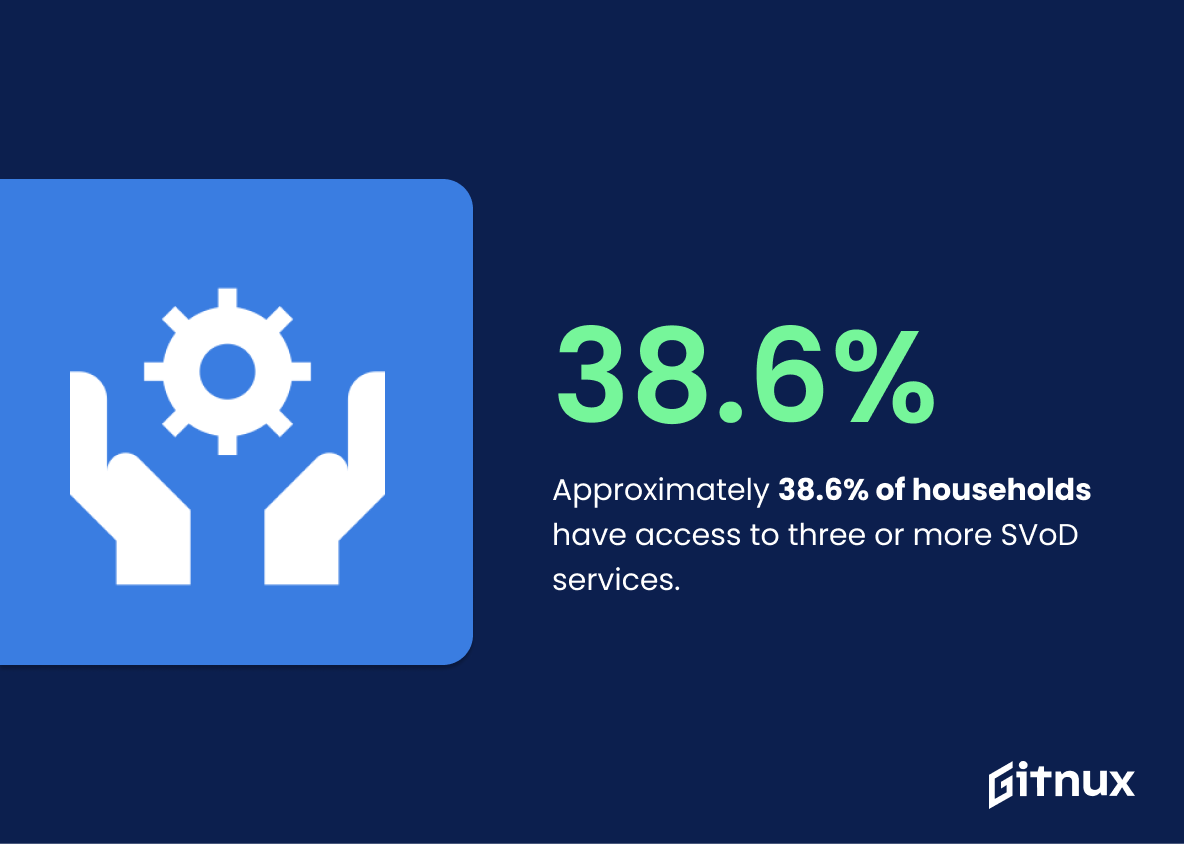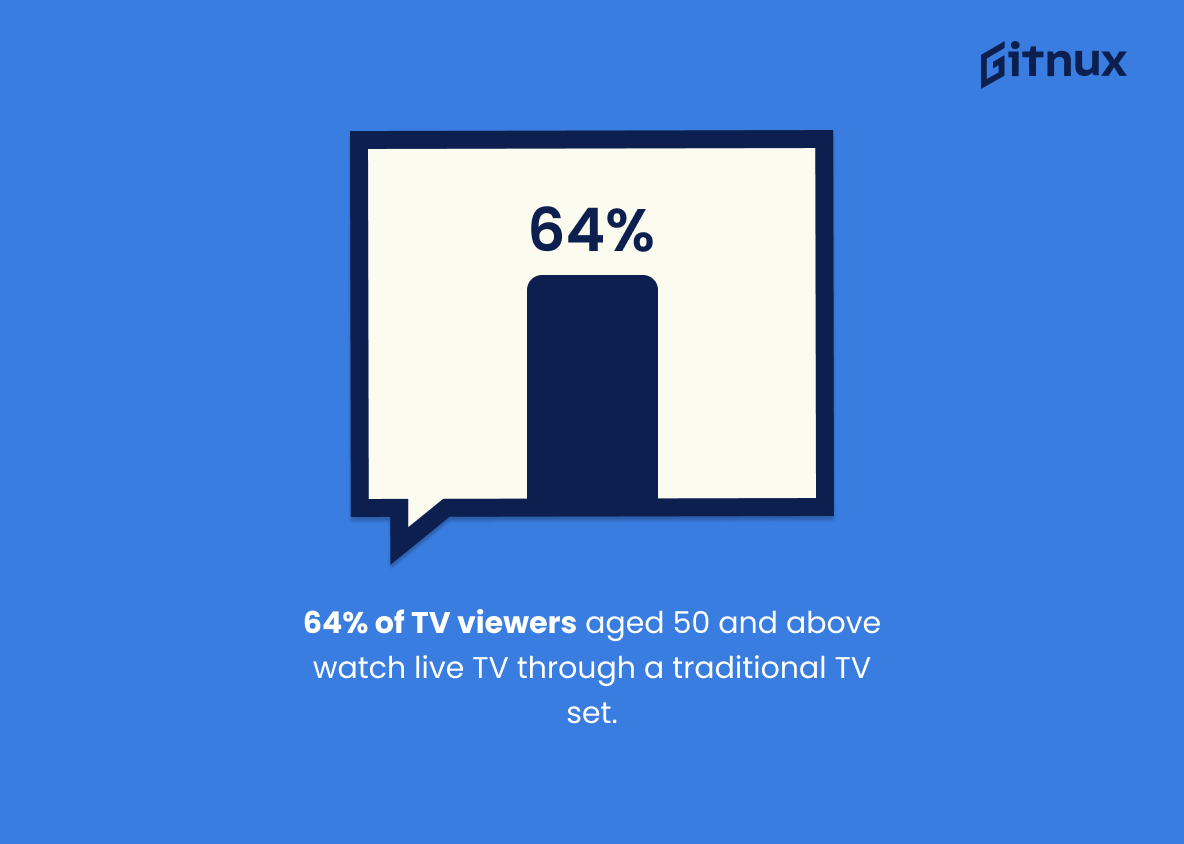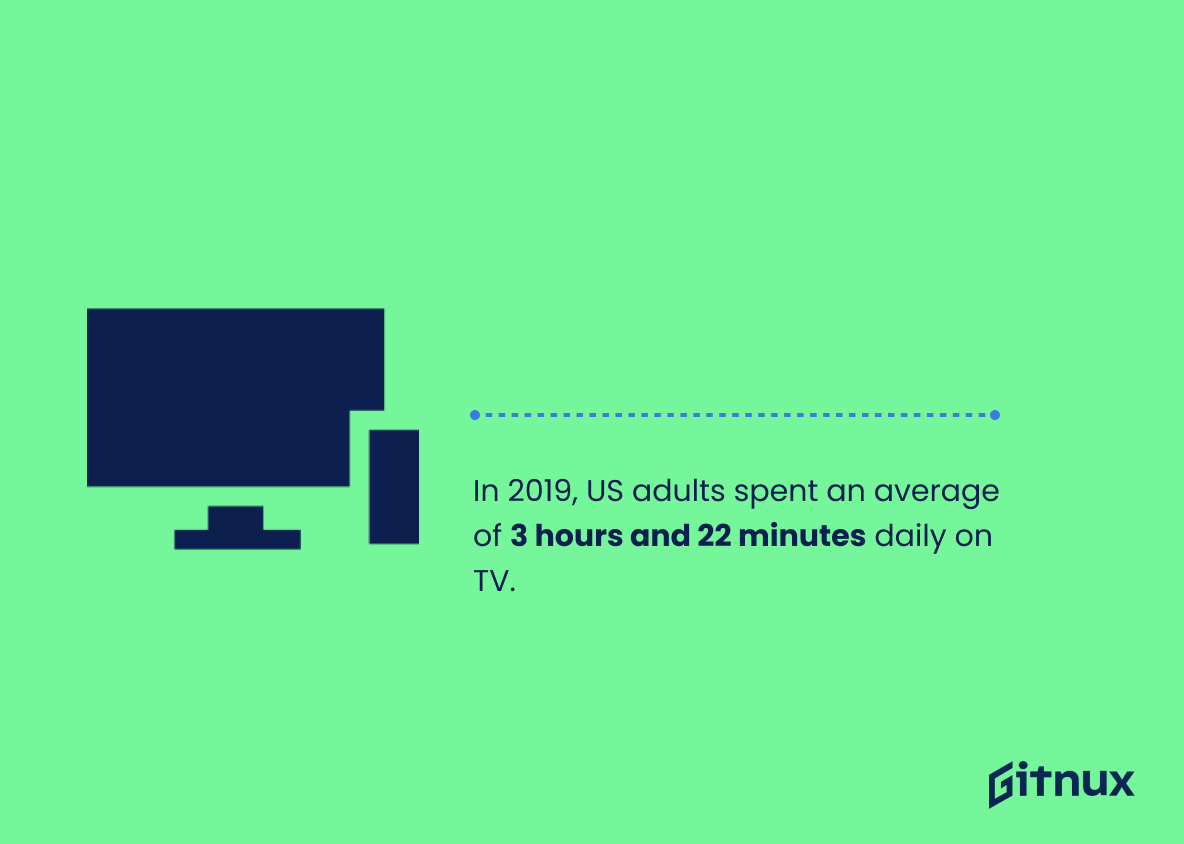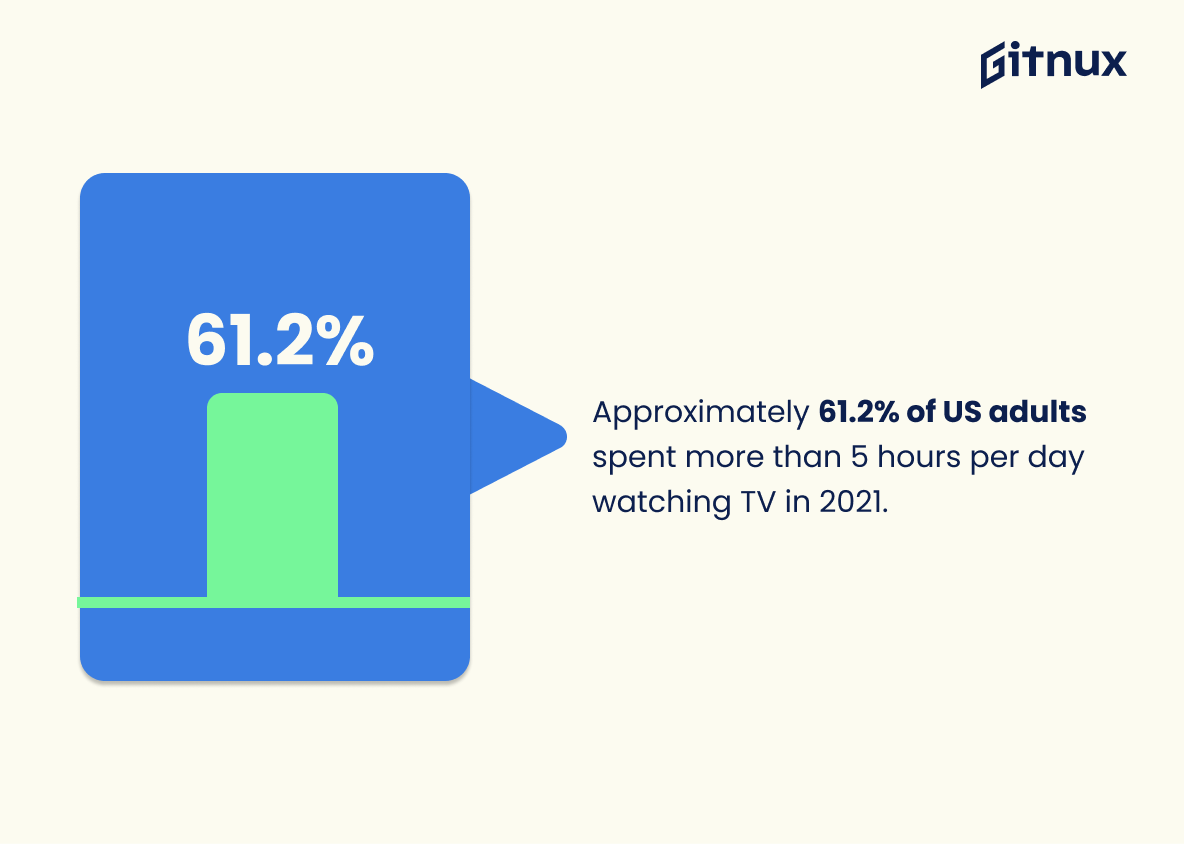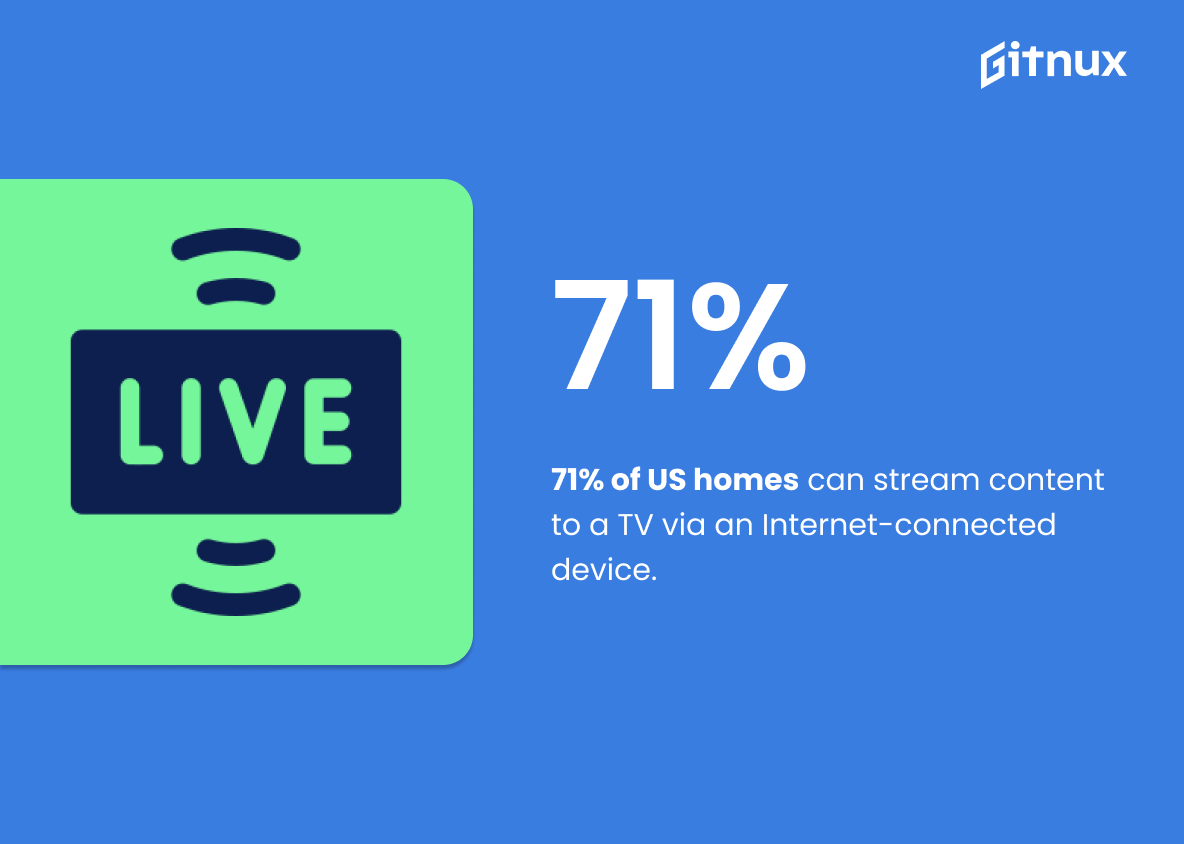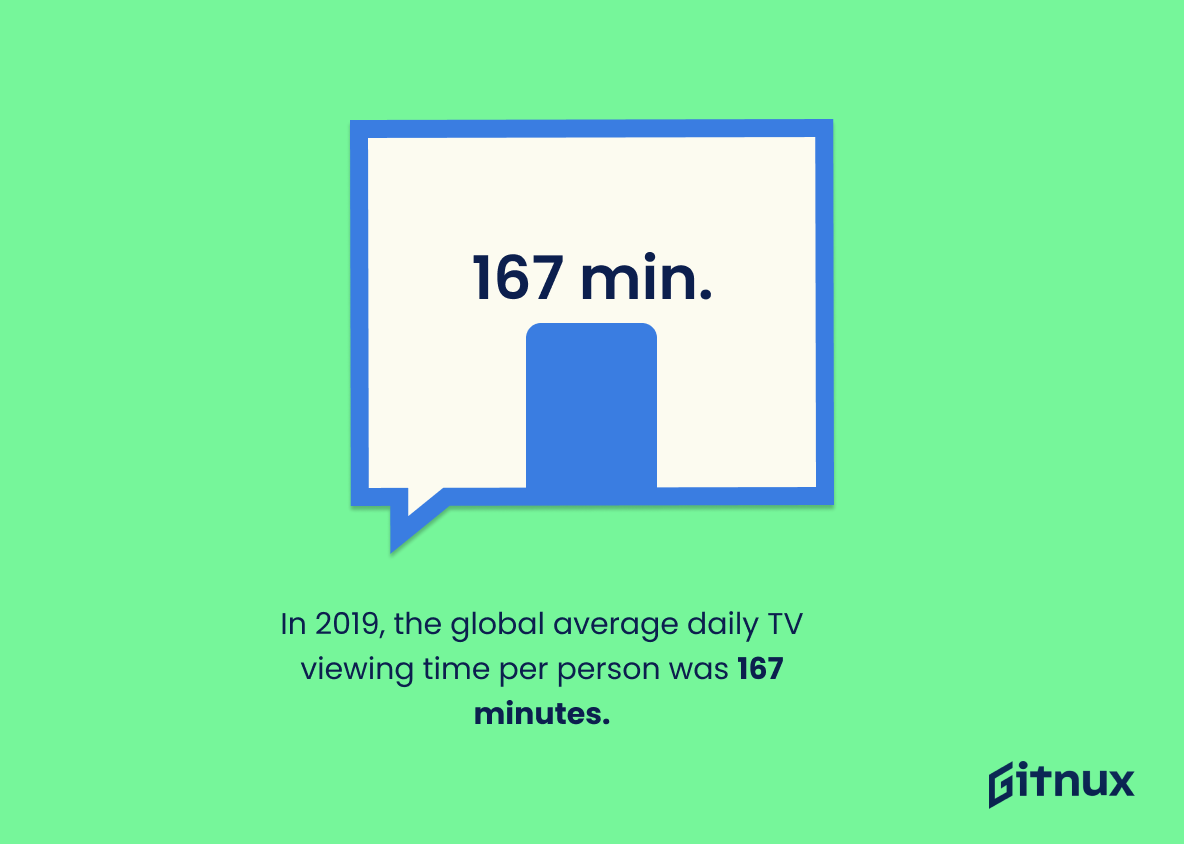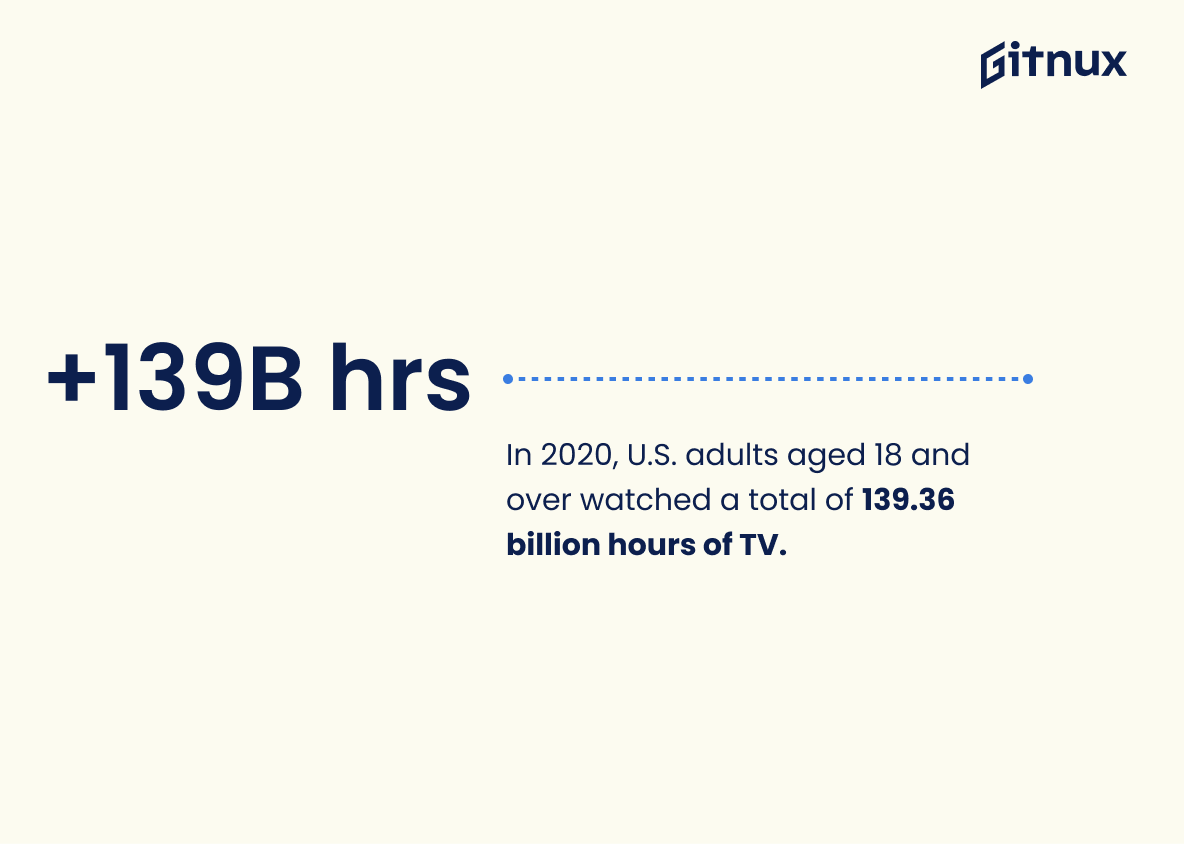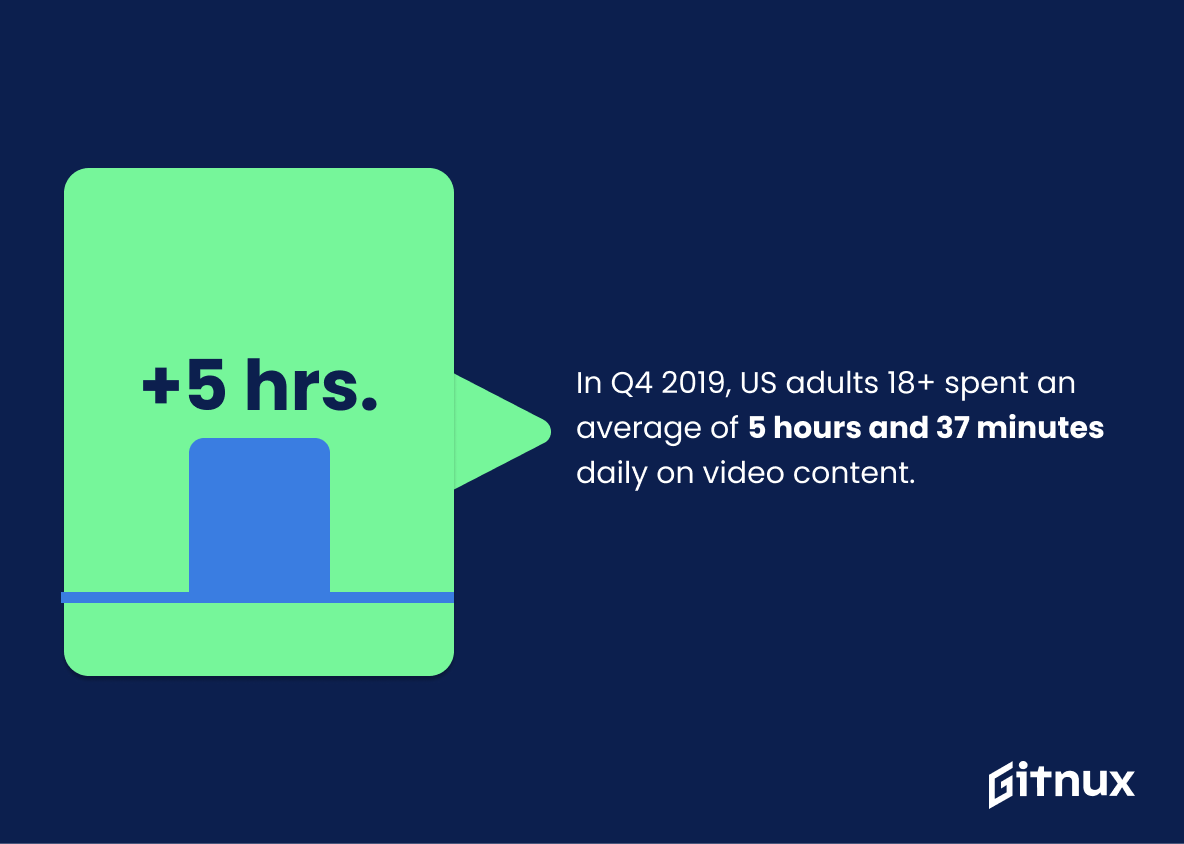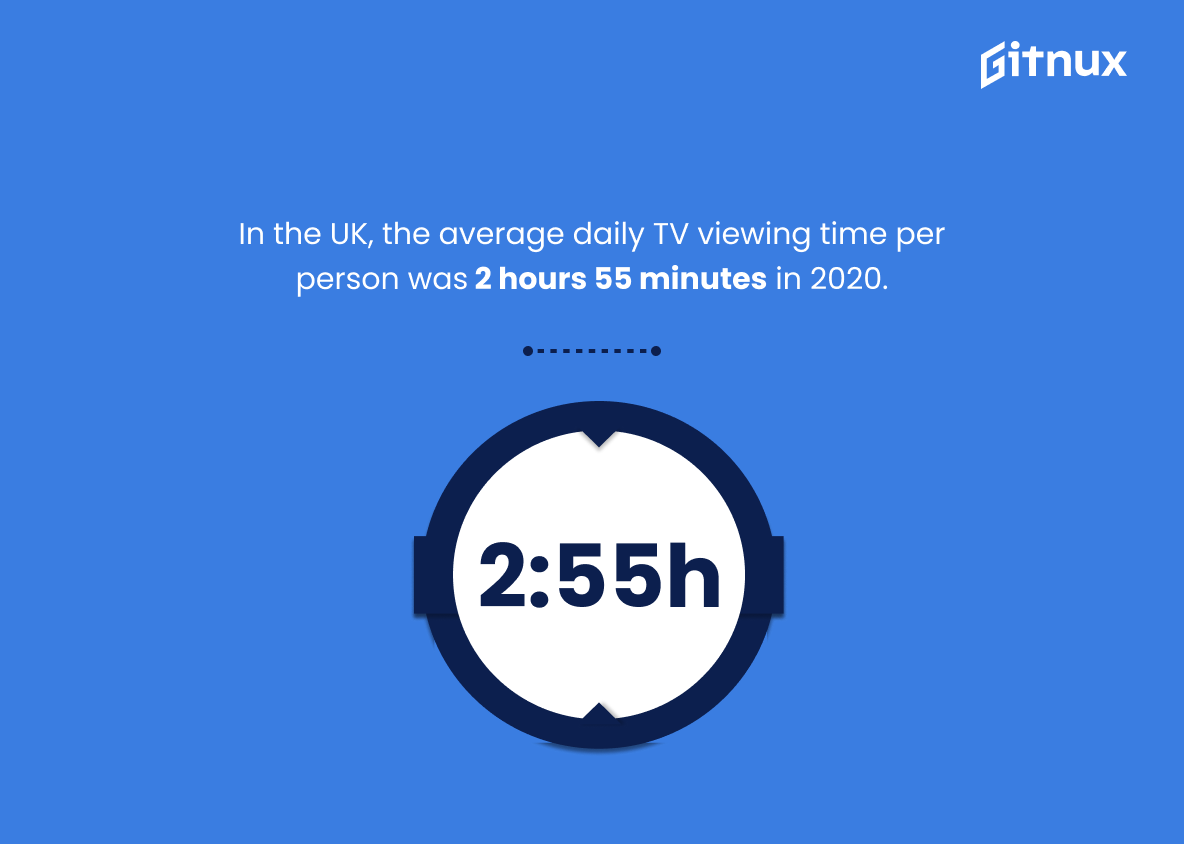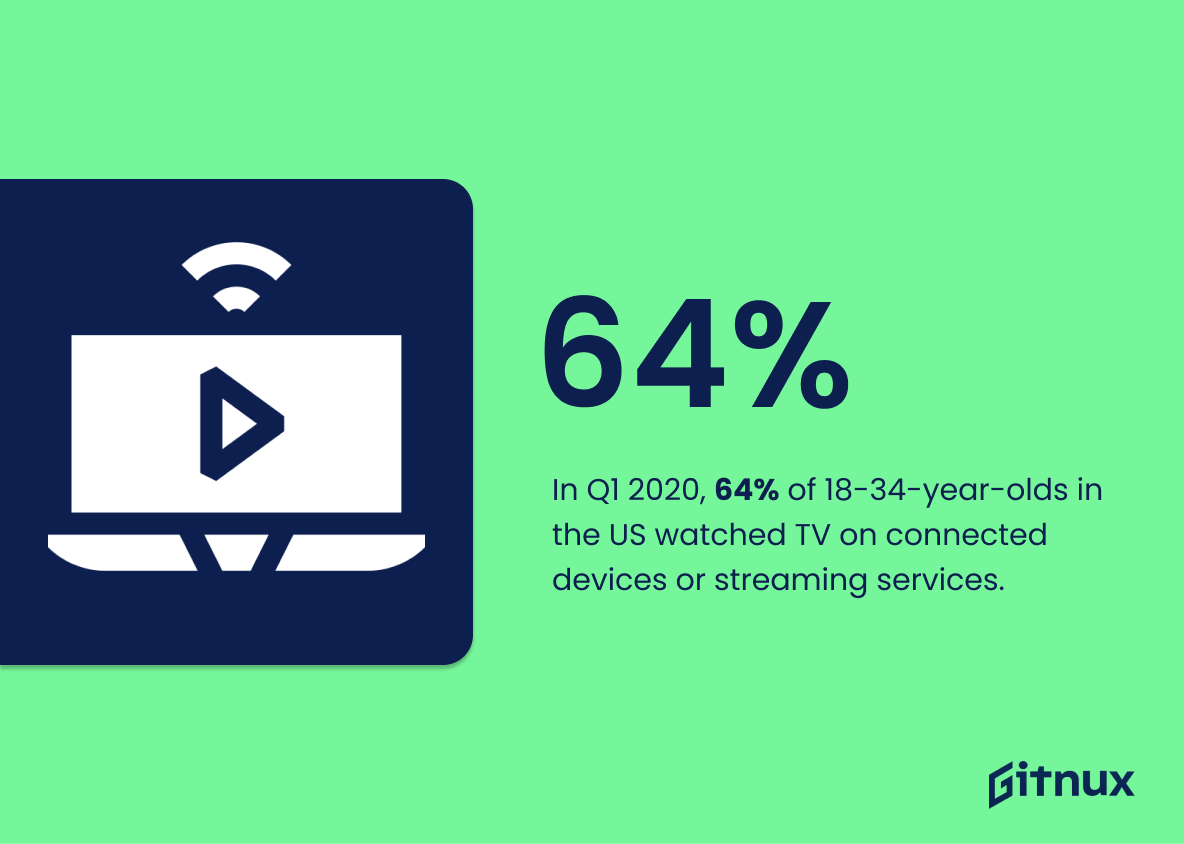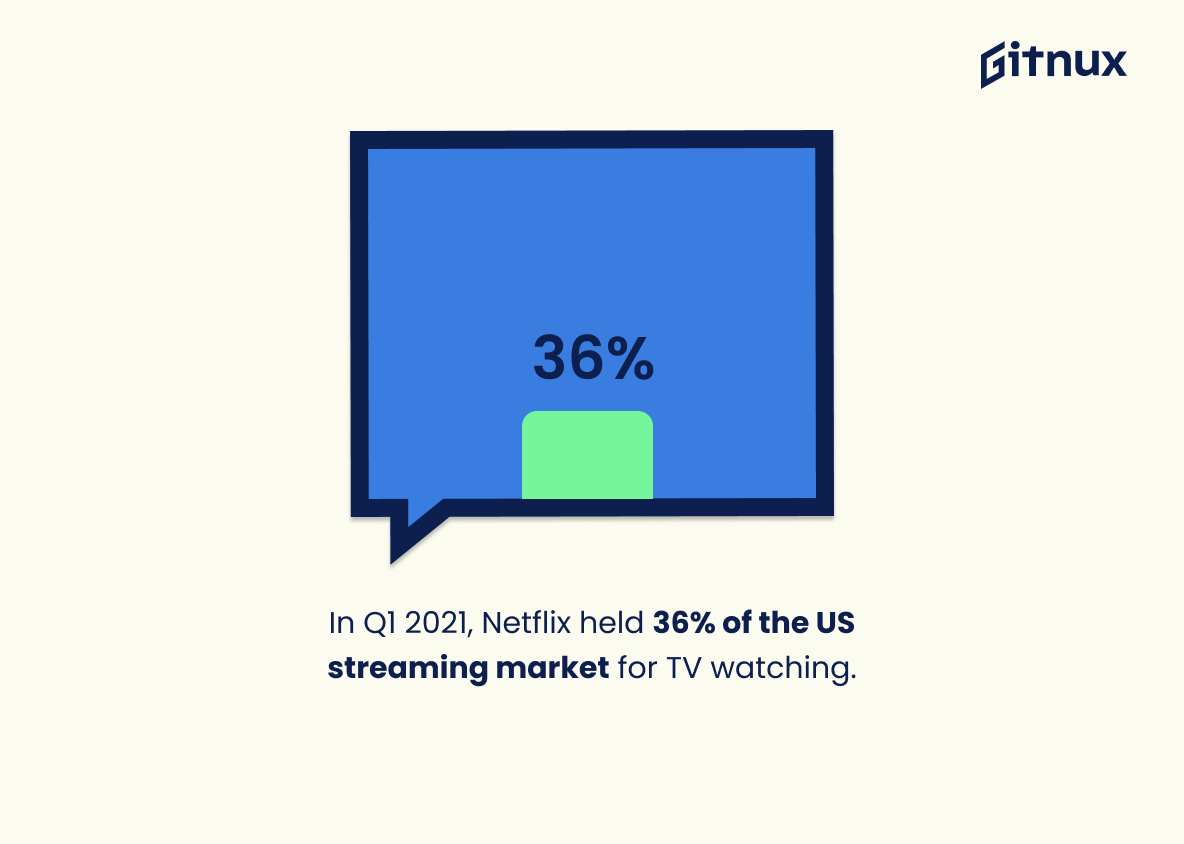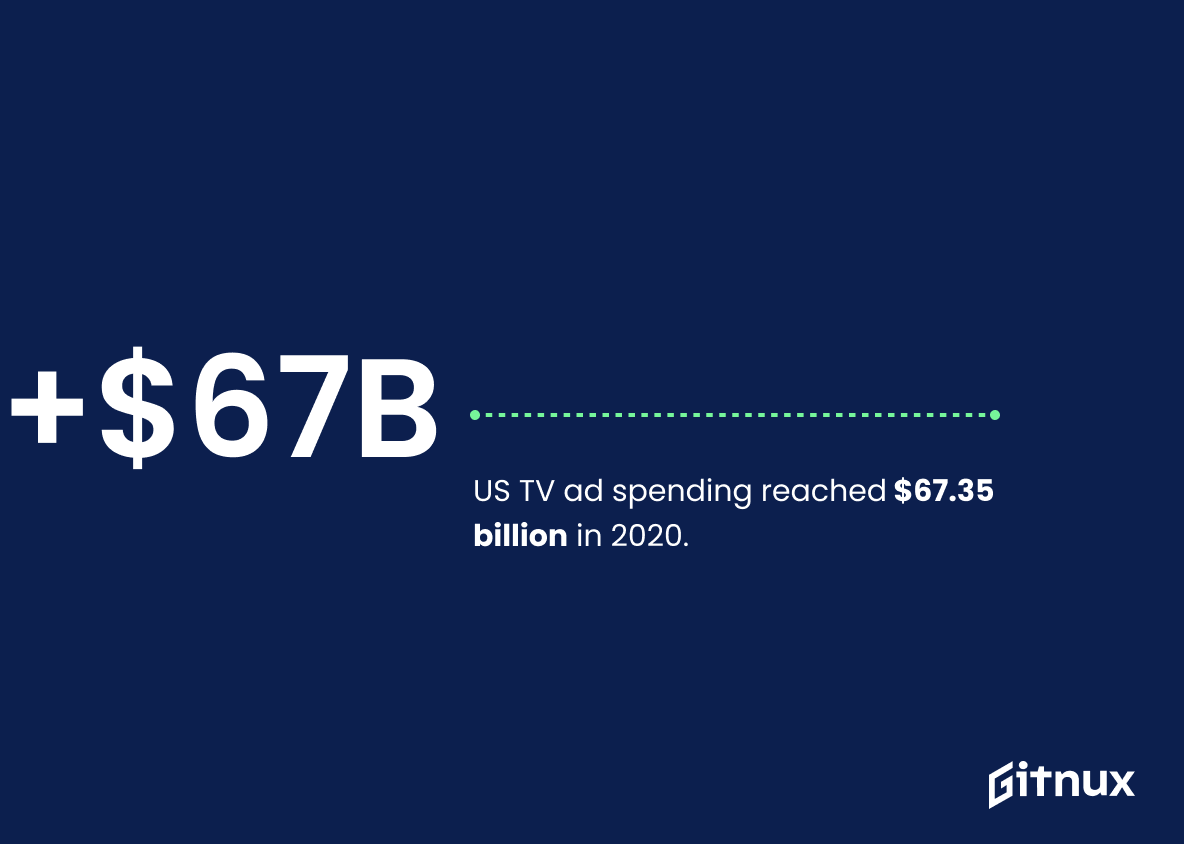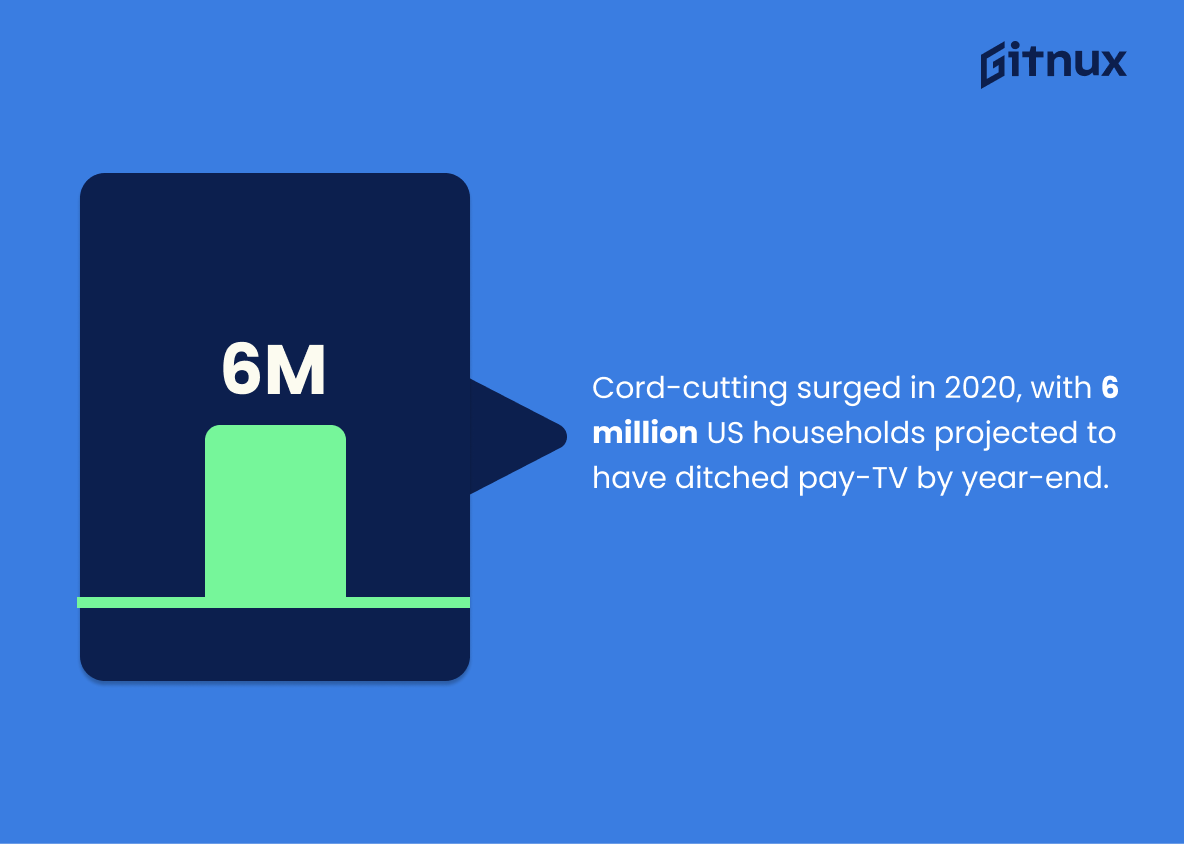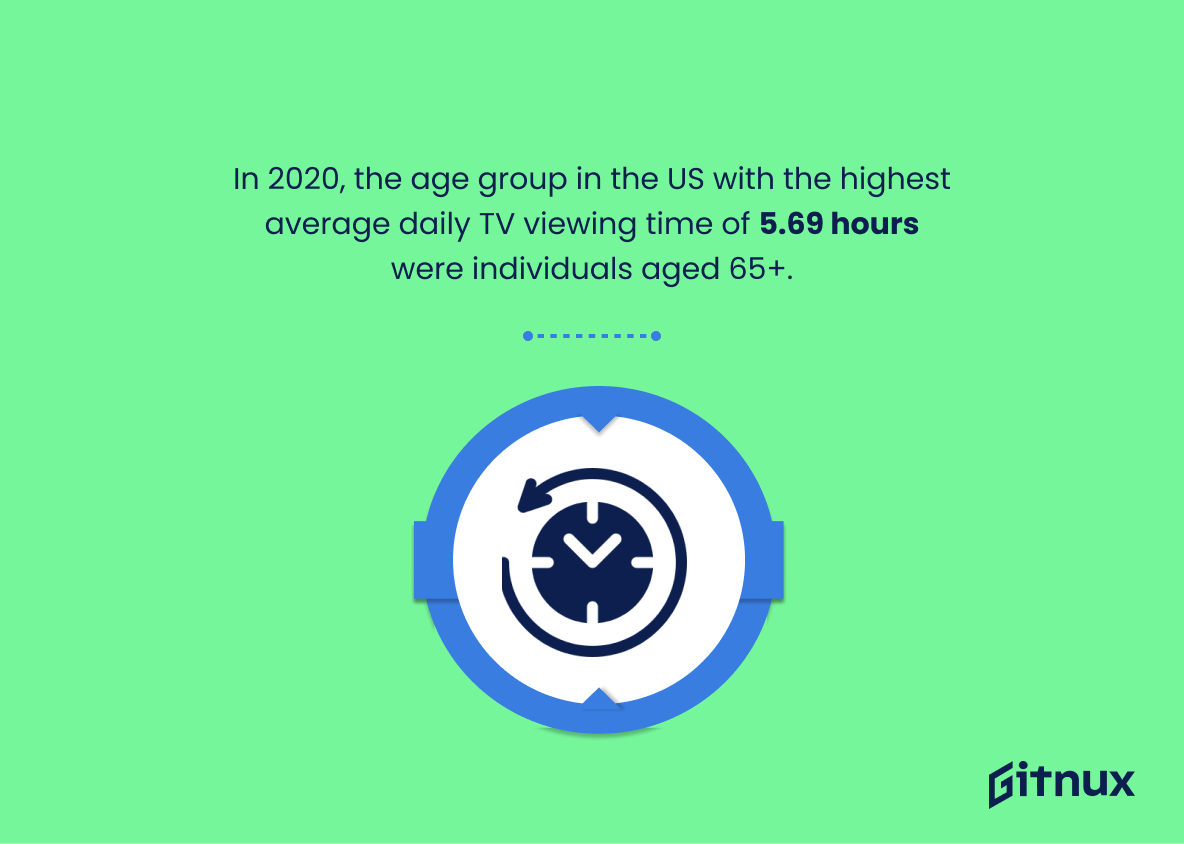TV watching has become an integral part of our lives. According to statistics, people around the world spend a significant amount of time each day consuming television content. In this blog post, we will explore some interesting facts and figures about TV viewing habits in different countries and regions across the globe.
We’ll look at average daily TV viewing times, subscription video on demand (SVoD) services penetration rates, traditional vs streaming viewership trends among various age groups as well as other related topics such as cord-cutting behavior and top viewed shows. So let’s dive into these fascinating stats.
TV Watching Statistics Overview
Approximately 38.6% of households have access to three or more SVoD services.
This statistic is indicative of the changing landscape of television viewing. It shows that more and more households are turning to streaming services for their entertainment needs, rather than relying solely on traditional cable or satellite TV. This shift in viewing habits has implications for the television industry, as streaming services are becoming increasingly popular and competitive. As such, it is important to understand the prevalence of streaming services in order to better understand the current state of television viewing.
64% of TV viewers aged 50 and above watch live TV through a traditional TV set.
This statistic is significant in the context of TV watching statistics as it highlights the fact that a large proportion of the older demographic still prefer to watch live TV through a traditional TV set. This indicates that traditional TV sets are still a popular choice for many viewers, and that the industry should take this into account when considering the future of TV viewing.
In 2019, adults in the United States spent an average of 3 hours and 22 minutes per day watching live and time-shifted television.
This statistic is a telling indication of the amount of time Americans are dedicating to television viewing. It highlights the prevalence of television watching in our society and the impact it has on our daily lives. This statistic is especially relevant in a blog post about TV Watching Statistics, as it provides a snapshot of the current state of television viewing in the United States.
Approximately 61.2% of US adults spent more than 5 hours per day watching TV in 2021.
This statistic is a telling indication of the amount of time that US adults are dedicating to TV watching. It highlights the prevalence of TV watching in the US and the potential impact it has on people’s lives. It is an important statistic to consider when discussing the effects of TV watching on society and the potential implications for public health.
In the US, 96% of primetime TV-viewing is done live or within 3 days.
This statistic is a telling indication of the importance of live TV-viewing in the US. It highlights the fact that, despite the rise of streaming services, the majority of TV-viewers still prefer to watch their favorite shows in real-time or within a few days of the original broadcast. This is significant for anyone looking to understand the current TV-viewing landscape, as it shows that live TV is still a major factor in the industry.
Approximately 71% of homes in the US have access to at least one Internet-connected device capable of streaming content to a TV.
This statistic is a telling indication of the prevalence of streaming content in the US. It shows that the majority of households have access to the technology necessary to watch TV shows and movies online, which is a major shift from traditional television viewing. This shift has had a significant impact on the way people consume media, and it is important to consider when discussing TV watching statistics.
In 2019, the global average daily TV viewing time per person was 167 minutes.
This statistic is a powerful indicator of the impact television has on our lives. It shows that, on average, people around the world are spending more than two and a half hours a day watching TV. This is a significant amount of time and speaks to the power of television as a medium for entertainment, education, and communication. It also highlights the importance of understanding the impact of television on our lives and how it can be used to shape our behavior and attitudes.
In 2020, U.S. adults aged 18 and over watched a total of 139.36 billion hours of TV.
This statistic is a powerful indicator of the immense amount of time U.S. adults are dedicating to TV watching. It speaks to the prevalence of television in our lives and the impact it has on our daily habits. This statistic is an important piece of information to consider when discussing TV watching statistics, as it provides a comprehensive overview of the amount of time Americans are spending in front of the screen.
In Q4 of 2019, adults 18+ in the US spent an average of 5 hours and 37 minutes per day watching video content (including live TV, DVR, streaming devices, DVD, and game consoles).
This statistic is a telling indication of the amount of time that adults in the US are dedicating to watching video content. It highlights the fact that TV watching is a major part of the daily lives of many Americans, and that it is an activity that is not going away anytime soon. This statistic is important for anyone looking to understand the current state of TV watching in the US, and it is a valuable piece of information for anyone looking to create content related to TV watching.
In the United Kingdom, the average daily TV viewing time per person was 2 hours 55 minutes in 2020.
This statistic is a telling indication of the amount of time people in the United Kingdom are spending in front of the television. It provides a valuable insight into the habits of the population and can be used to inform decisions about the content that is being broadcast. It also serves as a reminder of the potential impact that television can have on our lives, both positive and negative.
As of Q1 2020, 64% of TV watching among 18-34-year-olds in the US was done on a TV-connected device or through a streaming service.
This statistic is a telling indication of the changing landscape of TV watching among 18-34-year-olds in the US. It shows that the traditional way of watching TV is no longer the primary method, as a majority of viewers are now turning to TV-connected devices or streaming services. This shift in viewing habits is significant, as it reflects the changing preferences of the younger generation and the increasing popularity of streaming services.
In Q1 2021, Netflix was the leading streaming service in terms of time spent watching TV, with 36% of the streaming market in the US.
This statistic is a testament to Netflix’s success in the streaming market, highlighting its dominance in the US. It shows that Netflix is the go-to choice for many viewers when it comes to streaming TV, and that it has a significant share of the market. This is important information for anyone interested in the streaming industry, as it provides insight into the current state of the market and the preferences of viewers.
US TV ad spending reached $67.35 billion in 2020.
The fact that US TV ad spending reached $67.35 billion in 2020 is a testament to the power of television as a medium for advertising. It shows that despite the rise of digital media, television remains a viable and effective platform for businesses to reach their target audiences. This statistic is a reminder that television is still a major player in the advertising landscape and should not be overlooked.
Cord-cutting accelerated in 2020, with 6 million US households expected to have canceled pay-TV by the end of the year.
This statistic is a telling indication of the changing landscape of television viewing. It shows that more and more people are turning away from traditional pay-TV services and opting for streaming services instead. This shift in consumer behavior has major implications for the television industry, as it means that companies must adapt to the changing market or risk losing customers. As such, this statistic is an important piece of information for anyone interested in the current state of television viewing.
In 2020, the age group in the US with the highest average daily TV viewing time of 5.69 hours were individuals aged 65+.
This statistic is a telling indication of the importance of television in the lives of the elderly. It highlights the fact that, despite the emergence of new technologies, television remains a major source of entertainment and information for those aged 65 and over. This is an important insight for anyone looking to understand the media habits of this demographic, and could be used to inform strategies for targeting this age group with relevant content.
In the 2020-2021 season, American TV series “NCIS” was the most-viewed TV show in the US, pulling in approximately 12.57 million viewers.
This statistic is a testament to the enduring popularity of “NCIS” in the US. It shows that the show has been able to maintain its viewership despite the changing landscape of television. This is an important indicator of the show’s success and its ability to remain relevant in the current media environment. It also serves as a reminder of the power of television to bring people together and provide entertainment.
By the end of 2021, global internet protocol television (IPTV) subscribers are expected to reach 349 million.
This statistic is a testament to the growing popularity of IPTV, which is revolutionizing the way people watch television. As more and more people switch to IPTV, it is becoming increasingly clear that this technology is here to stay. This statistic is a sign of the times, and it is indicative of the changing landscape of television viewing.
In Q3 2021, 54.1% of U.S. households had a smart TV, with an increase of 11.7% compared to 2019.
This statistic is a clear indication of the growing trend of smart TV ownership in the United States. It shows that more and more households are investing in the technology, which is likely to have a significant impact on how people watch television. This could mean that more people are taking advantage of streaming services, or that they are using their smart TVs to access more content than ever before. This statistic is an important insight into the changing landscape of television viewing in the United States.
Conclusion
TV watching is an activity that has been around for decades, and it continues to be a popular pastime. The statistics show that people are spending more time than ever before in front of the TV, with average daily viewing times ranging from 2 hours 55 minutes to 5 hours 37 minutes depending on age group and location.
In addition, subscription video-on-demand services have become increasingly popular over the years as well as streaming content through internet connected devices such as smart TVs or game consoles. Furthermore, traditional live television still remains a major source of entertainment for many viewers aged 50 and above. With these trends continuing into 2021 and beyond, there’s no doubt that TV will remain one of our favorite forms of entertainment for years to come.
References
0. – https://www.nielsen.com
1. – https://www.emarketer.com
2. – https://www.leichtmanresearch.com
3. – https://www.justwatch.com
4. – https://www.statista.com
5. – https://www.npd.com
